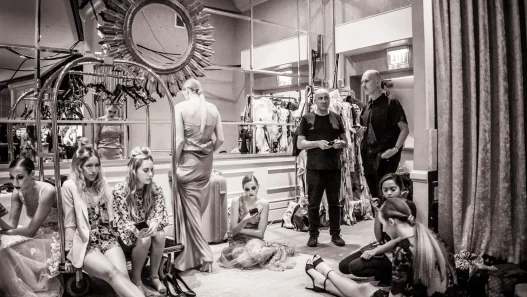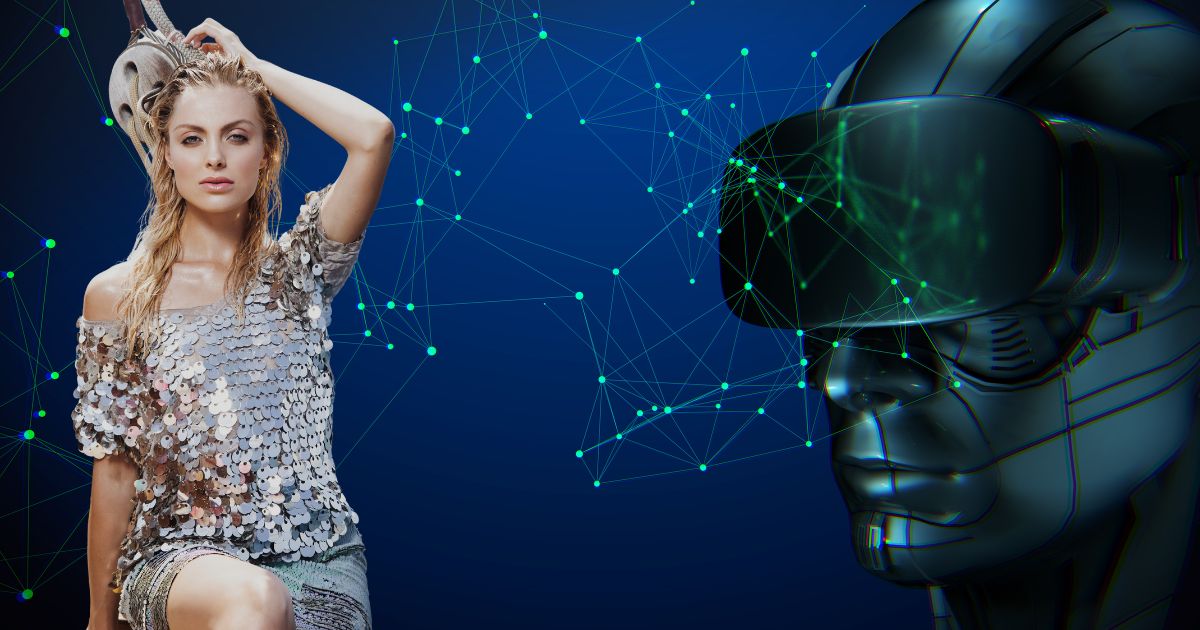While you’re walking down any local commercial street in India filled with fashion articles be it apparel or accessories, you could find luxury clothing and accessories from popular brands like Louis Vuitton, Prada, Gucci, Chanel, Michael kors, Armani just within the price point of a few hundred rupees. Little do we know that the Louis Vuitton handbag offered for a price of 2000 rupees is worth around half a million at the Louis Vuitton outlet in a posh mall, that is because these products are counterfeits of the original. Counterfeits are an illegal imitation of trademarked fashion articles. The illegal copying is becoming very common these days as the love for luxury grows widely due to the constant celebrity influence, social media has opened doors for the fans to view celebrity closets. The problem of counterfeits is widely spoken about and this problem can be solved or per say tackled with Intellectual property laws. copyright and trademark protect designers and aid them fight against the copycats. Alongside these issues we have a major issue of cultural appropriation which is less known and is less spoken about, the author seeks to draw your attention towards analyzing if there is sufficient IP protection against this problem.
WHAT IS CULTURAL APPROPRIATION?
Culture appropriation means the adaptation of elements of a particular culture by persons not belonging to the same culture. Cultural appropriation has always been a problem with respect to the fashion industry. It often happens that the foreign countries adapt the cultural elements of a particular domain without giving them due credit and in a way it leads to infringement of Intellectual Property rights. The problem of cultural appropriation is prevalent worldwide. Especially when it comes to Indian fashion, the problem seems much bigger because Indian fashion is very popular for its traditional textile and artifacts. Petty heritage Indian designers and craftsmen might be very often robbed of their due credit by big luxury brands.
TRADITIONAL DESIGNS AND CULTURAL CONVERGENCE
Small traditional Indian designers and craftsmen are exploited by posh, luxury brands. A great illustration of this is the popular case of People tree and the Dior. Christian Dior the popular luxury fashion brand was alleged of plagiarizing the designs of a small traditional design unit in Rajasthan.
 People Tree Traditional Rajasthani block print and Sonam Kapoor in Dior
People Tree Traditional Rajasthani block print and Sonam Kapoor in Dior
Sources: Sreyoshi Guha, People Tree v. Dior: IP Infringement, Cultural Appropriation or Both? SPICYIP, (1 feb,2018).
People Tree is a small institute initiated by two designers, Orijit Sen and Gurpreet Sidhu, This was a institute that helped the traditional handmade block print designers market their designs, this institute was not created by the designers to make profit but just for social-economic development of the traditional block print designers of small village Kalandera in Rajasthan. Dior had copied the hand printed yoga motifs from the people tree textile, the Dior dress was worn by Sonam Kapoor. Diro was called out in the media for blatant plagiarism.
This is a case of clear cut copyright infringement but the question here is which intellectual property right could be applied. Copyright Act 1957, protects all sorts of artists works, there is potential for grant of copyright to the block print designs. But the problem under copyright law is that it extends the right to exclusive use of a design to the specific owner, in the case of heritage traditional Rajasthani block prints there are many craftsmen who created such designs and exclusive ownership to a specific individual can’t be granted. The next potential form of IP protection is Trademark. Trademark is the mark or brand name under which fashion articles of a particular designer are marketed. This mark becomes the identity of a fashion house or the designer. Trademark Act 1999, protects the brand name or the mark against plagiarism this kind of protection, couldn’t be applied to this case because a trademark must be able to bring out differences of service and products of one service provider from that of another, hence when it comes to a traditional art, where a single or a specific producer is not involved, but a community is involved there is no claim left under trademark. The only potential IP protection in this case is protection under geographical indication.
Geographic Indication Act, 1999 makes the registration of traditional, cultural designs of a particular geographic area in India. Geographic indication means associating the identity of a particular product to a country or region which essentially attributes the origin of such product. Under this act the design of indigenous communities can be protected and registered. An action against infringement of such registered GI could be brought against the person who falsely represents the design to be their own or use the design without the authorization of the authorized user. In case of Dior and people tree issues, even though the block print designs were not registered under the Act, they still had the potential of being protected as intellectual property and being registered under the geographical indication act 1999. However this area of law was not touched in this case, the People tree organization had a strong case because this case got a lot of media attention. Hence out of court settlement was sought between both the parties. The exact details of the compensation given to people tree by Dior are not known as, people tree signed a non disclosure clause with Dior.
The term of protection against infringement of geographic indication is ten years, which can be further renewed by ten years. There are a number of Indian textile that have successfully obtained the Geographical Indication(GI) tag under the Act of 1999, some very popular examples maybe Kasturi Embroidery of Karnataka, Chanderi Sarees of Madhya Pranesh, Mysore Silk from Karnataka, Pochampally Ikat fabric of Telangana, Kutch Embroidery from Gujarat etc. The Geographical Indication tag definitely provides protection to the cultural and traditional designers or say craftsmen of Indian. However the process of registering the Geographic Indication could be quite hectic and expensive, and also traditional designers might lack knowledge of such rights. The registration process can be completed by any organization on behalf of ingenious craftsmen, but again this doesn’t happen as there lies a gap between the law and its use or implementation. Also there are few culturally significant things that don’t belong to any particular region and are generally manufactured across India, tracking the origin of such fashion articles might also not be possible. For example the Chandelier Hair clip launched by ASOS.
 ASOS Chandelier Hair Clip.
ASOS Chandelier Hair Clip.
Source: Avery Matera, ASOS Fax Chandelier Hair Clip Slammed for Cultural Appropriation, TEENVOUGE, (7 April 2017)
ASOS is a online fashion retailer brand based in the United Kingdom, this brand has launched its new Chandelier hair clip collection. What they called the chandelier Hair was a traditional Indian jewelry called the ‘mang tikka’ which is traditionally worn by Indian brides and other Indian women during festivities. ASOS didn’t acknowledge the fact that the hair clip design was inspired by Indian culture, and no credit was given to India.
The brand was slammed on social media for their Act. However this being a world of fast fashion after a few days a new collection was launched and people forgot about this controversy. The point to be noted here is even though it is clear that the tikka is of Indian origin, it’s tough to find out the place of origin, as it’s a traditional Indian jewelry piece that is manufactured and worn across India. It’s simply a part of Indian culture, but does not have a particular geographical area in Indian to which it could be associated. This is where the Indian laws fall short in solving the problems of cultural appropriation in Indian fashion.
These are just two instances of cultural appropriation and intellectual property infringement, there are a huge number of cases of similar kind that go unnoticed. It’s seen that almost every day a designer is called out on the internet for cultural appropriation. The case of Dior and People tree came to be noticed only because the dress was worn by a famous Indian celebrity and it was published on the cover of Elef magazine, and also the traditional design was backed by a marketing channel or say an organization set up by qualified designers. It would otherwise have been lost among plenty of other cases which don’t get notified by the media or slammed on social media. The indigenous, people might not even get to know that there is plagiarism of their designs. And even if it’s out this the Intellectual property law doesn’t provide enough help in case of cultural appropriation problems. It’s become very necessary to revisit the law with respect to protection of Traditional Cultural fashion designs.
The problem of cultural appropriation is not just faced by India, but cultures throughout the globe could be abused. Adapting and embracing distinct cultures per say cultural convergence is not wrong, but the actual problem arises when different cultures are not acknowledged and sometimes abuse the sentiments of people. In 2018 Gucci was called out for cultural appropriation as it showcased its new collection in the Milan fashion week, where the model walked the ramp with the traditional Sikh turbans and the traditional hijabs worn by Muslims. Articles of such sort have religious sentiments attached to it. The Sikh and Muslim community through the globe was offended by this act, it is unfair that models who don’t knew the history behind use such things could walk the ramp wearing a culturally significant article. Using something without knowing the cultural significance of it is a problem. There is no law which specifically addresses this problem. There were a few international conventions that had attempted to address such issues, but again to obtain benefits of such conventions one needed to be associated with such conventions. There is a solid need for India to up their IP law game and amend or introduce new IP laws more specific to fashion and culture areas.


















